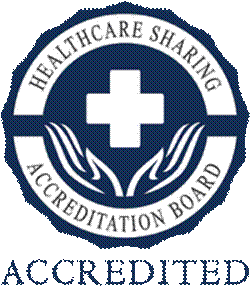Uncover the crucial differences between sprains and strains and explore effective treatment options to manage and recover from these common injuries.
Defining Sprains and Strains: A Closer Look at Each Condition
Sprains and strains are common injuries that impact the musculoskeletal system, each involving different tissues and displaying distinct characteristics. A sprain occurs when ligaments, the tough bands of fibrous tissue that connect bones and stabilize joints, are stretched or torn, often due to a twist, fall, or impact. Common sites for sprains include the ankle, wrist, and knee.
On the other side, a strain refers to an injury to a muscle or the tendons that attach muscles to bones. Strains occur when these tissues are overextended or overused, resulting in tears in the muscle fibers or tendons. Strains typically occur in areas such as the back, hamstring, and calf. Recognizing this difference is vital for appropriate treatment and successful recovery.
Symptoms and Diagnosis: How to Identify Sprains and Strains
Determining whether an injury is a sprain or strain is crucial for proper treatment. Symptoms of a sprain may include pain, swelling, bruising, and difficulty moving the affected joint. On the other hand, strains are characterized by pain, muscle spasms, weakness, swelling, inflammation, and cramping. The severity of both injuries can vary from mild to severe, potentially necessitating medical attention.
Diagnosing these injuries typically involves a physical examination and, if needed, imaging tests like X-rays, MRI, or CT scans to assess the extent of the damage. Healthcare professionals will examine the area for tenderness, swelling, and range of motion to provide an accurate diagnosis, which can also determine if other structures, such as bones or cartilage, are involved.
Immediate Treatment Strategies
Immediate treatment for both sprains and strains follows the R.I.C.E. protocol: Rest, Ice, Compression, and Elevation. Rest involves avoiding activities that cause pain or discomfort to the injured area. Ice should be applied soon after the injury to reduce swelling and pain. Compression with an elastic bandage can also help minimize swelling and provide support. Elevation of the injured area above the level of the heart is advised to reduce swelling.

Over-the-counter pain relievers, such as ibuprofen or acetaminophen, can be used to manage pain. It's important to note that while these initial steps can be taken at home, severe injuries require prompt medical attention. A healthcare provider may prescribe stronger medications, physical therapy, or even surgery for complete tears or more serious conditions.
Long-Term Management and Rehabilitation Techniques
Long-term management for sprains and strains involves engaging in physical therapy and rehabilitation exercises to help regain strength, flexibility, and range of motion. Protective bracing or taping may be recommended for sprains to support the healing joint, while rehabilitation typically starts with gentle range-of-motion activities and progresses to more intensive strengthening and stretching exercises.
In the case of strains, as the initial pain diminishes, it is important to gradually incorporate tailored stretching and strengthening exercises for the specific muscle group. Working closely with a physical therapist can ensure the right level of activity and reduce the risk of re-injury. Consistency in performing these rehabilitation exercises plays a crucial role in achieving a full recovery.
Preventing Sprains and Strains: Tips and Best Practices
Prevention of sprains and strains involves several strategies such as maintaining a healthy weight, engaging in regular flexibility and strengthening exercises, and warming up properly before physical activity. Wearing appropriate footwear that provides support and practicing good posture can also reduce the risk of these injuries.
It's equally important to listen to your body and avoid overexertion. Learning and using proper techniques during sports or physical activities can help prevent undue stress on the body. Lastly, ensuring that work environments are ergonomically designed can minimize the risk of repetitive strain injuries for those with physically demanding jobs.
Benefits of Joining a Health Care Sharing Program
Joining a Health Care Sharing Program, such as OneShare Health, can provide significant benefits for individuals seeking treatment for sprains and strains. These Programs offer a community-based approach to sharing healthcare costs, helping to alleviate the financial burden of medical expenses related to these injuries. By joining OneShare Health, Members can access affordable healthcare options, including Virtual Urgent Care available 24/7 at no cost, substantial discounts on imaging tests and x-rays, prescriptions through RX Valet, and even surgical interventions if needed. This faith-based collaborative model promotes transparency, accountability, and support among Members, creating a network of individuals committed to each other's well-being.
Moreover, being part of a Health Care Sharing Program offers peace of mind, knowing that financial assistance is available when facing unexpected healthcare costs. With OneShare Health's Classic or Catastrophic Programs, you can get the care you need when you need it. Don't wait—get a quote now and see the benefits of joining a community that cares.



.png)






